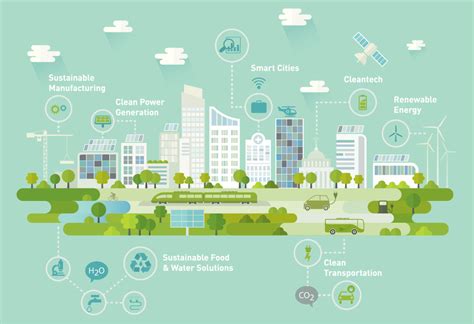In today’s world, the need for sustainable solutions is more pressing than ever. As the impact of human activity on the environment becomes increasingly apparent, the field of sustainable engineering has emerged as a crucial factor in addressing these challenges. In this blog post, we will delve into the diverse aspects of sustainable engineering and its impact on our environment. From understanding the principles of sustainable engineering to identifying environmental challenges, applying innovative design thinking, evaluating sustainable material choices, implementing energy-efficient solutions, maximizing renewable resources, analyzing life cycle assessments, promoting circular economy perspectives, addressing social equity in engineering, and measuring and monitoring sustainable impact, we will explore the multifaceted approach that sustainable engineering offers. Join us on this journey as we unravel the potential for sustainable engineering to create lasting and impactful change for a more environmentally conscious future.
Table of Contents
Understanding Sustainable Engineering
Sustainable engineering is the application of engineering principles and practices to create long-term solutions that support the well-being of people and the planet. It involves considering the environmental, social, and economic impacts of a project throughout its entire lifecycle, from design to disposal.
One of the key principles of sustainable engineering is the concept of cradle-to-cradle, which aims to minimize waste and maximize the use of renewable resources. This is achieved through practices such as recycling, upcycling, and designing products with the end in mind to ensure that they can be easily disassembled and repurposed.
Another important aspect of sustainable engineering is the integration of renewable energy sources and energy-efficient technologies into projects. This involves reducing energy consumption and utilizing clean energy sources such as solar, wind, and hydro power to minimize the environmental impact of engineering projects.
Overall, understanding sustainable engineering requires a holistic approach that considers the interconnectedness of natural and human systems, and seeks to create innovative solutions that meet the needs of the present without compromising the ability of future generations to meet their own needs. It is an essential discipline for addressing the environmental challenges and promoting sustainable development in the 21st century.
Identifying Environmental Challenges
Environmental challenges are complex and multifaceted issues that pose a threat to the well-being of our planet. From climate change to air and water pollution, it’s crucial to identify and understand the various challenges that are affecting our environment. One of the main challenges is the excessive emission of greenhouse gases, which contributes to the warming of the planet. This results in melting ice caps, rising sea levels, and extreme weather events. Another pressing issue is the depletion of natural resources, such as deforestation and overfishing, which disrupts the delicate balance of ecosystems. In addition, pollution from industrial and agricultural activities continues to contaminate our air, water, and soil, impacting the health of humans and wildlife alike.
Furthermore, rapid urbanization and industrialization have led to the generation of vast amounts of waste, including plastic pollution that is causing harm to marine life and ecosystems. The loss of biodiversity due to habitat destruction and invasive species also poses a significant threat to the stability of ecosystems. Additionally, the overconsumption of resources and unsustainable production practices are driving environmental degradation on a global scale, exacerbating the challenges we face.
Identifying these environmental challenges is the first step towards finding sustainable solutions. By understanding the root causes and consequences of these issues, we can work towards implementing effective strategies to mitigate their impact and preserve the health and integrity of our planet for future generations.
It’s essential for individuals, businesses, and governments to come together and address these challenges collectively, taking proactive measures to protect the environment and promote sustainable practices that will lead to a more balanced and harmonious relationship with nature.
Applying Innovative Design Thinking
When you think about innovative design thinking, what comes to mind? Perhaps it’s the idea of pushing the boundaries of traditional design practices to come up with new, creative solutions to problems. This approach involves looking at problems from a different perspective, challenging assumptions, and embracing experimentation.
One key aspect of innovative design thinking is the emphasis on empathy and understanding the needs and desires of the end-users. By placing the user at the center of the design process, engineers can create products and solutions that truly resonate with their intended audience.
Furthermore, innovative design thinking also encourages collaboration and cross-disciplinary teamwork. By bringing together individuals with diverse backgrounds and expertise, new ideas can be generated, and innovative solutions can emerge.
Overall, applying innovative design thinking requires a willingness to embrace risk, think outside the box, and constantly iterate and improve upon ideas. It’s about challenging the status quo and striving for continuous improvement in the pursuit of creating truly impactful and meaningful engineering solutions.
Evaluating Sustainable Material Choices
When it comes to evaluating sustainable material choices, it is important to consider the environmental impact of the materials used in engineering and construction projects. One of the key factors to consider is the life cycle assessment of the materials, which takes into account the environmental impact of the materials from production to disposal.
Another important aspect to consider is the renewability of the materials. Materials that can be replenished or recycled are a more sustainable choice compared to those that are finite and non-renewable.
In addition, the energy efficiency of the materials should be evaluated. Materials that require less energy for production and use are more sustainable choices. Lastly, the social equity aspect of the materials should also be taken into consideration, ensuring that the materials are produced in a socially responsible manner.
Implementing Energy-Efficient Solutions
As we face the challenges of climate change and environmental degradation, the need for energy-efficient solutions becomes increasingly pressing. Implementing these solutions not only reduces our carbon footprint but also helps in conserving natural resources for future generations. One of the key ways to achieve energy efficiency is by utilizing renewable sources of energy such as solar, wind, and hydroelectric power. By shifting our reliance from fossil fuels to these sustainable alternatives, we can significantly reduce our impact on the environment.
Furthermore, energy-efficient buildings play a critical role in the overall sustainability of urban infrastructure. Incorporating features such as improved insulation, energy-efficient appliances, and smart building design can drastically reduce energy consumption in residential and commercial spaces. The use of energy management systems and smart technologies also aids in monitoring and optimizing energy usage, leading to long-term energy savings.
It is essential for industries to embrace energy-efficient practices as well. This can be achieved through the adoption of energy-efficient machinery, optimizing production processes, and embracing sustainable supply chain management. Additionally, emphasizing employee engagement and education about energy conservation can further contribute to the implementation of energy-efficient solutions in the industrial sector.
Transitioning towards a future that prioritizes energy efficiency requires a multi-faceted approach. From individual actions to large-scale industrial initiatives, the collective effort towards implementing energy-efficient solutions is imperative for a sustainable and thriving planet.
Maximizing Renewable Resources
Maximizing renewable resources is crucial in today’s world as we face the challenges of climate change and environmental degradation. By harnessing the power of renewable resources such as solar, wind, and hydroelectric power, we can reduce our reliance on fossil fuels and minimize our impact on the planet. This shift towards renewable energy sources is essential for creating a more sustainable future.
One of the key ways to maximize renewable resources is through investment in green technology and infrastructure. This can include the development of more efficient solar panels, the construction of wind farms, and the implementation of smart grid systems to better utilize renewable energy sources. By leveraging these technologies, we can significantly increase our capacity to generate clean, renewable energy.
Additionally, government policies and incentives play a crucial role in maximizing renewable resources. By offering subsidies for renewable energy projects, implementing regulations to limit carbon emissions, and setting renewable energy targets, governments can encourage the adoption of sustainable energy solutions and accelerate the transition towards a greener energy landscape.
Furthermore, raising awareness and educating the public about the benefits of renewable resources is essential in driving widespread adoption. By promoting the advantages of renewable energy, such as reduced greenhouse gas emissions, energy independence, and job creation in the green energy sector, we can inspire individuals and businesses to embrace renewable energy options.
Analyzing Life Cycle Assessments
When it comes to analyzing life cycle assessments, it is crucial to consider the environmental impact of products and processes from the initial extraction of raw materials to the final disposal. Understanding the entire life cycle of a product can provide valuable insights into its environmental footprint and help identify opportunities for improvement.
By conducting a thorough assessment, engineers can identify environmental challenges at each stage of a product’s life cycle, from raw material extraction and processing to manufacturing, use, and end-of-life disposal. This comprehensive approach allows for a more holistic view of the environmental impact of a product, enabling engineers to make informed decisions and implement sustainable solutions.
Additionally, applying innovative design thinking is essential in the analysis of life cycle assessments. By considering environmental factors throughout the design process, engineers can develop more sustainable products and processes that minimize resource use, reduce emissions, and decrease overall environmental impact.
Furthermore, engineers can evaluate sustainable material choices as part of the life cycle assessment process. By selecting materials with lower environmental footprints, such as recycled or renewable resources, engineers can make significant strides towards improving the sustainability of a product or process.
Promoting Circular Economy Perspectives
When it comes to promoting circular economy perspectives, it is essential to understand the concept of circular economy itself. Circular economy is an economic system aimed at eliminating waste and the continual use of resources. In this model, products are designed to be reused or repurposed rather than ending up in landfills. This perspective emphasizes the importance of reducing, reusing, and recycling materials in order to minimize environmental impact.
Businesses play a crucial role in promoting circular economy perspectives by implementing sustainable production and consumption practices. This involves adopting eco-friendly packaging, reducing single-use plastics, and integrating recyclable materials into their products. By doing so, businesses can minimize their environmental footprint and contribute to the overall goal of promoting circular economy perspectives.
Furthermore, governments and policymakers can also promote circular economy perspectives by implementing regulations and incentives that encourage sustainable practices. This can include tax breaks for businesses that use recycled materials, subsidies for renewable energy sources, and policies that promote the reuse of products. By creating a supportive regulatory environment, governments can help shift the economy towards a more circular and sustainable model.
Education and awareness also play a vital role in promoting circular economy perspectives. By educating the public about the impact of their consumption habits and highlighting the benefits of a circular economy, individuals can make informed choices that contribute to the overall sustainability effort. Additionally, promoting circular economy perspectives through educational initiatives can inspire future generations to prioritize sustainability and contribute to a more environmentally conscious society.
Addressing Social Equity in Engineering
Addressing social equity in engineering is crucial for creating a more inclusive and just society. In the field of engineering, it is important to consider the social impact of projects and ensure that everyone has access to the benefits of technological advancements. This involves addressing issues such as unequal access to resources, discrimination, and economic disparity.
One way to address social equity in engineering is by actively seeking input from a diverse range of stakeholders, including marginalized communities. By incorporating the perspectives and needs of those who are often left out of decision-making processes, engineers can design more inclusive and effective solutions. This can lead to innovative approaches that better address the needs of all members of society.
Another important aspect of addressing social equity in engineering is promoting diversity and inclusion within the field itself. This can involve creating opportunities for underrepresented groups to pursue careers in engineering, as well as fostering a work environment that is welcoming and supportive of diversity. By diversifying the field, engineers can bring a wider range of perspectives to problem-solving and decision-making processes.
Overall, addressing social equity in engineering requires a commitment to understanding and addressing the social impact of technological developments. By prioritizing social equity in engineering projects and within the engineering field, we can work towards creating a more equitable and just society for all.
Measuring and Monitoring Sustainable Impact
In today’s world, it is crucial for engineering projects to not only focus on creating sustainable solutions but also to measure and monitor their impact on the environment. Without this information, it’s difficult to truly understand the effectiveness of sustainability efforts. By evaluating the impact of engineering projects, it is possible to identify areas for improvement and make data-driven decisions for future initiatives.
One of the key aspects of measuring and monitoring sustainable impact is the use of key performance indicators (KPIs). These KPIs can vary depending on the specific project, but commonly include factors such as energy consumption, waste production, and carbon emissions. By tracking these indicators over time, engineers can gain valuable insights into the effectiveness of their sustainable practices.
Another important aspect of measuring and monitoring sustainable impact is the use of life cycle assessments. This involves analyzing the environmental impact of a product or project throughout its entire life cycle, from raw material extraction to end-of-life disposal. By taking a cradle-to-grave approach, engineers can gain a comprehensive understanding of the environmental implications of their work.
Furthermore, stakeholder engagement plays a crucial role in measuring and monitoring sustainable impact. By involving all relevant parties in the assessment process, including community members, regulators, and environmental organizations, engineers can ensure that they are capturing a holistic view of the impact of their projects.






